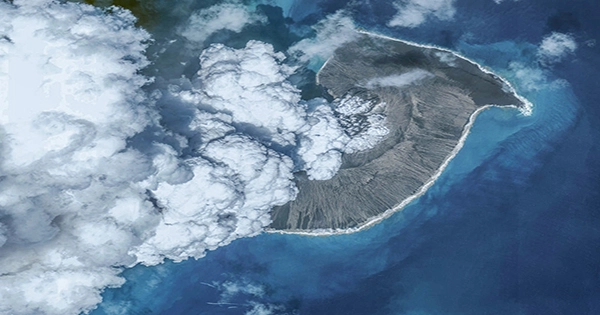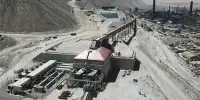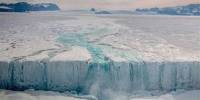According to a new study, the Hunga Tonga-Hunga Ha’apai eruption on January 15 was extremely intense. It was not only the most powerful of this century, but it also sent out airwaves with a level of intensity not seen in 139 years. Since the Krakatoa explosion on May 20, 1883, it was the loudest sound on Earth. The research, which was published in two publications in the journal Science, reveals that the tsunami was caused by an unanticipated and abnormal air wave triggered by the eruption. This might explain why the waves arrived two hours sooner than projected by conventional tsunami models. The eruption’s sonic boom could be heard 6,200 kilometers (3,850 miles) distant in Alaska.
In a statement, lead author Robin Matoza, an associate professor in the Department of Earth Science at UC Santa Barbara, said, “This atmospheric wave’s occurrence was unparalleled in the contemporary geophysical record.” The eruption’s waves circled the earth four times in one direction and three times in the other. The researchers gathered data on the so-called Lamb wave, a low-frequency longitudinal pressure wave that needs the impact of gravity to be taken into consideration.
The Lamb wave was travelling at almost 1,100 kilometers per hour and had reached a height of 450 kilometers (280 miles), deep into the ionosphere, according to the scientists. That’s higher than the International Space Station’s orbit. “The atmospheric waves were recorded globally across a wide frequency spectrum,” said David Fee of the University of Alaska Fairbanks Geophysical Institute, a co-author. “We will get a better understanding of acoustic and atmospheric wave creation, propagation, and recording by examining this extraordinary dataset.”
The fee went on to say, “This has ramifications for monitoring nuclear explosions, volcanoes, earthquakes, and a number of other occurrences.” “By understanding the airwaves from this eruption, we expect to be able to better monitor volcanic eruptions and tsunamis.” The second research looked at how the tsunami deviated from predictions. Water displacement caused by seabed crustal deformation and atmospheric pressure waves causes tsunamis from underwater volcanic eruptions.
The Lamb wave, on the other hand, appears to play a big part in this fatal tidal wave, bringing it much sooner than planned. Future models should include this situation, according to the researchers, in order to improve tsunami prediction and save lives. Across the Pacific, the Hunga Tonga-Hunga Ha’apai tsunami wounded 19 people and killed at least six. Several persons remain unaccounted for.
















